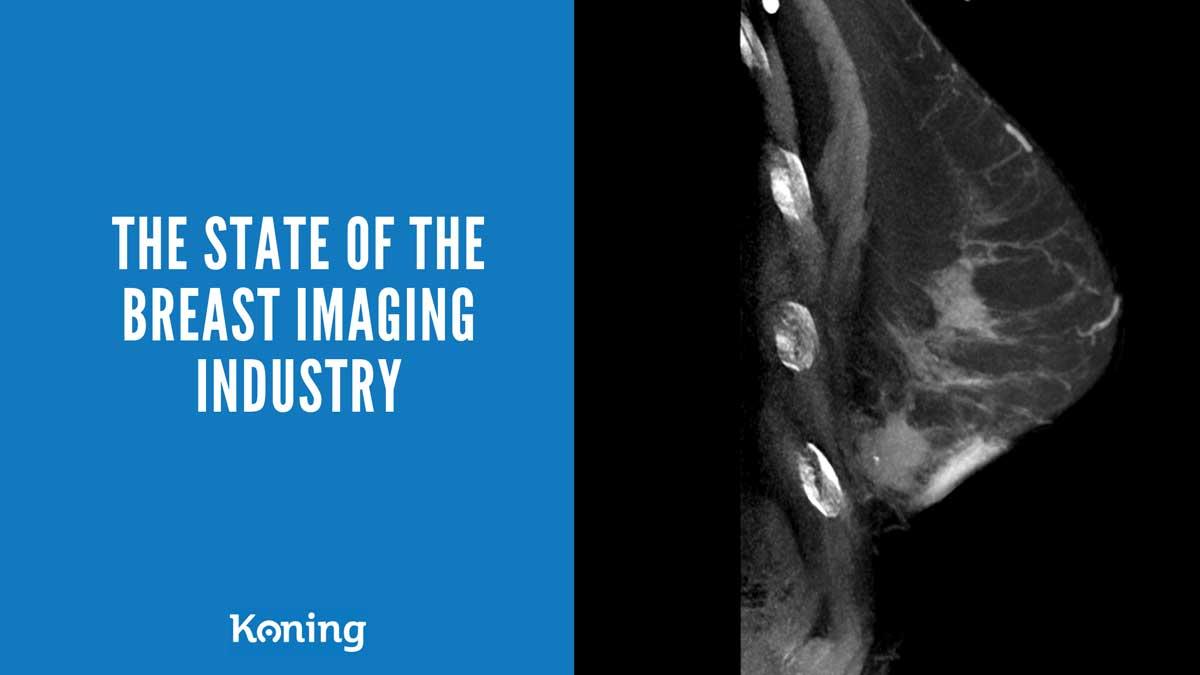
- Blog /
- August 25, 2021
The State of the Breast Imaging Industry
Over the past decade, breast imaging technology has slowly advanced from where it was 50 years ago. Market trends by Grand View Research show that by 2027, the international breast imaging market will hit a value of $7.08 billion. This is due to the increasing pervasiveness of chronic conditions like breast cancer.
Breast Imaging is a type of diagnostic radiology that uses ionizing and non-ionizing radiation to identify a tumor in the breasts. This method enables physicians to detect symptoms early, ideally preventing malignant cells from spreading. Processes such as Breast CT, ultrasound, biopsy, and Digital Breast Tomosynthesis (a type of mammogram) create digital images. The ultimate goal is to differentiate between malignant and non-malignant cells.
Drivers and Trends of the Breast Imaging Market
The increasing rates of breast cancer and raising awareness about the disease and its early detection are the main drivers of the global market. Moreover, the growth of the elderly population has also contributed to expansion in the breast imaging industry. Technical advancements have the potential to improve cancer diagnosis in both dense and non-dense breasts. Of all breast imaging options, breast CT provides excellent special recognition and true 3D imaging compared to conventional mammograms and ultrasound.
Evolution of the Breast Imaging Industry
Even before the advent of proper breast screening methods, physicians still saw the importance of early tumor detection. Mammography was one of the first breast imaging techniques to come about.
- Direction Exposure Mammography – This method involved long hours of exposure to radiation. Industrial type x-ray and the viewing conditions were not up to par.
- Xermammography - A fundamental progress over direct exposure imaging came with xeromammography, a process that entailed using xerographic photocopying. The technology became popular in the 1970s.
- Screen-Film Mammography – Screen-film mammography was another big step in the development of the breast imaging industry. It used a collimated x-ray beam to expose the skin, had quicker imaging times, and reduced dosage.
- Oblique View Mammography – The oblique-view mammography technique was introduced in 1974, allowing doctors to examine more breast tissue in the image field. It was also considered to be more effective than a single view as it allowed for better detection.
- Thermography – This method of breast imaging creates a temperature map of the breasts based on infrared radiation. The hypothesis behind this technique is that tumor cells show higher temperatures owing to a higher metabolism, making detection easier. Ultimately, thermography has not been proven to be any more beneficial than mammography.
The Future of Breast Imaging
Though breast screening has come a long way in recent years, there is still room for improvement. Different groups are doing their best to discover the most effective breast cancer detection method.
Digital Mammography
This technique captures the x-ray image on a computer as opposed to a film, although it still doesn’t capture a true, isotropic 3D view of the breast.
Microwave Imaging Spectroscopy
This technology uses microwave energy that is especially sensitive to water and can therefore identify where there is more of it. Tumors are known to have a higher water and blood content as compared to normal tissues.
Breast CT
Breast CT is one of the newer forms of breast imaging, but is quickly becoming more widely understood as an excellent option for all women, including those with dense breasts. Breast CT provides an isotropic view of the breast, ensuring that there is no overlapping tissue and, therefore, missed lesions.
Koning Breast CT (KBCT) excels in gathering comprehensive data for clinicians, and also allows for a more comfortable experience for the patients since there is no need to compress the breasts. As the industry continues to make improvements to breast imaging technology, breast CT will undoubtedly become the go-to method of breast imaging for women around the world.
https://www.alliedmarketresearch.com/breast-imaging-technologies-market
